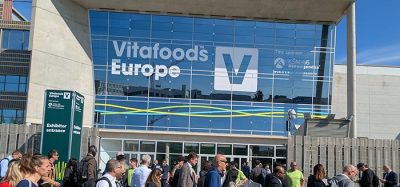In a nutshell: Mario Becker, Sartorius Group
- Like
- Digg
- Del
- Tumblr
- VKontakte
- Buffer
- Love This
- Odnoklassniki
- Meneame
- Blogger
- Amazon
- Yahoo Mail
- Gmail
- AOL
- Newsvine
- HackerNews
- Evernote
- MySpace
- Mail.ru
- Viadeo
- Line
- Comments
- Yummly
- SMS
- Viber
- Telegram
- Subscribe
- Skype
- Facebook Messenger
- Kakao
- LiveJournal
- Yammer
- Edgar
- Fintel
- Mix
- Instapaper
- Copy Link
Posted: 6 September 2011 | Mario Becker, VP Marketing and Product Management, PAT & Automation, Sartorius Group | No comments yet
Founded in 1870, the Sartorius Group is an international leading laboratory and process technology provider focused on the biopharma, pharma and food and beverage industries. In their strategy to help customers efficiently implement complex lab and production processes, Process Analytical Technology (PAT) is an essential contribution to process and quality optimisation. PAT has historically been rooted in the pharmaceutical industry with the FDA guidance document released in 2004 as a framework for innovative pharmaceutical development, manufacturing and quality assurance. “PAT is a risk-based approach for designing, analysing and controlling manufacturing processes, which is moving step-by-step toward the food industry. In this context we see a clear trend to shift the analytics of the lab in the process,” Becker explains. “PAT combines process analytics with software systems to measure and control Critical Process Parameters (CPPs) influencing the Critical Quality Attributes (CQAs) of intermediates and finished products. In the food industry, process analysers are mainly used for process optimisation and real-time process control.”
Founded in 1870, the Sartorius Group is an international leading laboratory and process technology provider focused on the biopharma, pharma and food and beverage industries. In their strategy to help customers efficiently implement complex lab and production processes, Process Analytical Technology (PAT) is an essential contribution to process and quality optimisation. PAT has historically been rooted in the pharmaceutical industry with the FDA guidance document released in 2004 as a framework for innovative pharmaceutical development, manufacturing and quality assurance. “PAT is a risk-based approach for designing, analysing and controlling manufacturing processes, which is moving step-by-step toward the food industry. In this context we see a clear trend to shift the analytics of the lab in the process,” Becker explains. “PAT combines process analytics with software systems to measure and control Critical Process Parameters (CPPs) influencing the Critical Quality Attributes (CQAs) of intermediates and finished products. In the food industry, process analysers are mainly used for process optimisation and real-time process control.”
Founded in 1870, the Sartorius Group is an international leading laboratory and process technology provider focused on the biopharma, pharma and food and beverage industries. In their strategy to help customers efficiently implement complex lab and production processes, Process Analytical Technology (PAT) is an essential contribution to process and quality optimisation. PAT has historically been rooted in the pharmaceutical industry with the FDA guidance document released in 2004 as a framework for innovative pharmaceutical development, manufacturing and quality assurance. “PAT is a risk-based approach for designing, analysing and controlling manufacturing processes, which is moving step-by-step toward the food industry. In this context we see a clear trend to shift the analytics of the lab in the process,” Becker explains. “PAT combines process analytics with software systems to measure and control Critical Process Parameters (CPPs) influencing the Critical Quality Attributes (CQAs) of intermediates and finished products. In the food industry, process analysers are mainly used for process optimisation and real-time process control.”
PAT solutions are designed to gain process understanding and based on this, help the food manufacturer to reduce risks using the right integration of systems into the existing and future processes. “For example, to avoid out of specification productions and assure constant quality,” Becker clarifies. “We don’t want to deliver independent solutions to the customers, just like a single sensor. It is our intention to create concepts, based on innovative technologies. Therefore we usually start with a consultation of our customers, looking at their individual processes, defining the CQAs and CPPs together with them and reaching a point where we select the right technology to measure and control the CPPs. We offer tailored process analytics solutions. Spectroscopy-based solutions include Near Infrared Spectroscopy, UV/Vis spectroscopy, CCD imaging and also alternative methods such as Microwave Resonance Technology and Refractometry. We also add software solutions for statistical process control and process automation based on the on-line analytics.” Defining the points of integration is essential to PAT implementation. Integration into quality management systems enables traceability and reliance to the existing reference methods, the customers and laboratories.
According to Becker, most of the existing food processes still have a lot of optimisation potential, especially when it comes to high value food products. “There’s huge potential for process optimisation of different kinds of organic concentrations e.g. in functional foods, but also in certain process steps like mixing, where PAT brings an optimisation potential on not only the quality but also the capacity, for example on batch mixing steps.” Becker continues, “Most food processes involve laboratory analytics that offer a measurement of the critical process parameters once every hour or shift. When working with natural ingredients especially, there’s a strong inhomogeneity and PAT implementation offers the opportunity to really measure the entire production batch and enables customers to react to parameter changes immediately and optimise the product quality.”
With all the different equipment used by the food industry, it raises the question of how easy it is to install a statistical process control solution for each individual company. “When it comes to our statistical process control solutions, we provide open interfaces so companies can collect data of almost any kind of existing measurement technologies and combine it with new process analytics,” Becker explains. “Pre-treatment of the process data is very important. We offer this to customers to enable them to have proper statistical process control but also offer solutions to analyse batch to batch consistency. We provide solutions to document the entire batch quality, including standard deviations of the critical process parameters.”
Towards the end of 2010, Sartorius announced a cooperation agreement with NIR-Online GmbH, an NIR spectroscopy supplier. “Most of the existing NIR systems have their origins in the laboratory. Our focus is clearly the process integration of the NIR technology and so the Sartorius systems provide a unique setup of Near-Infrared combined with UV/Vis Spectroscopy and CCD imaging specialised for the in-process use with a wide range of modules for process integration,” Becker notes.
So what does the future hold for PAT in the food industry? “We feel that PAT will become a big trend in the food industry, especially in the direction of real-time release and real-time process control,” Becker asserts. “The implementation of PAT holds the potential of real-time optimisation of critical process parameters which can result in a very short return on investment (ROI) cycle. When it comes to existing as well as new processes, the ROI can be between three to six months, depending on the individual processes.”
Mario Becker has worked for Sartorius for over 10 years. He began an apprenticeship as a student at Sartorius, studying precision engineering. He later earned a second degree in economics. He started in product management before moving into sales. Mario worked for three years as an international application specialist for process analytics and is now heading the PAT business unit as Vice President of Marketing.









